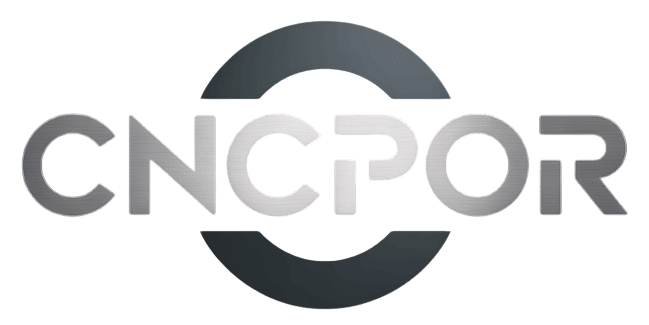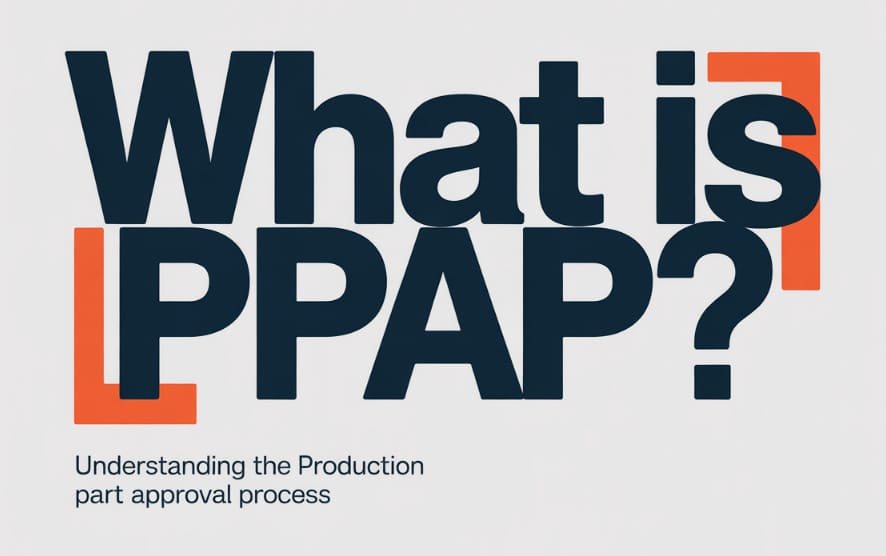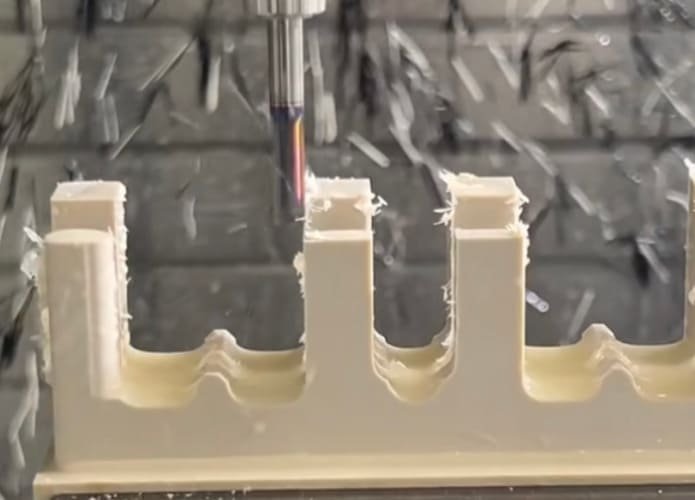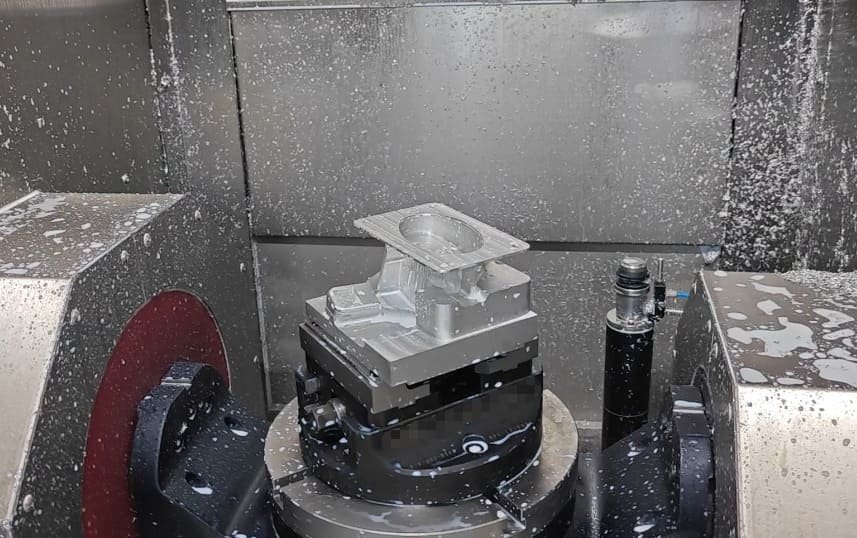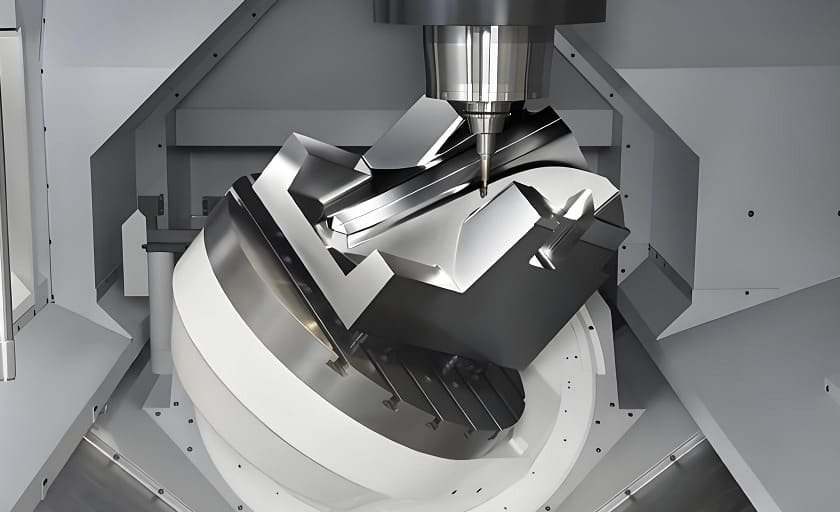The Production Part Approval Process (PPAP) forms the backbone of quality control in manufacturing industries. It ensures that suppliers consistently produce parts meeting exact specifications. Whether you’re new to manufacturing or looking to strengthen your quality processes, understanding PPAP is essential for maintaining production standards and building strong supplier relationships.
What is PPAP? A Comprehensive Definition
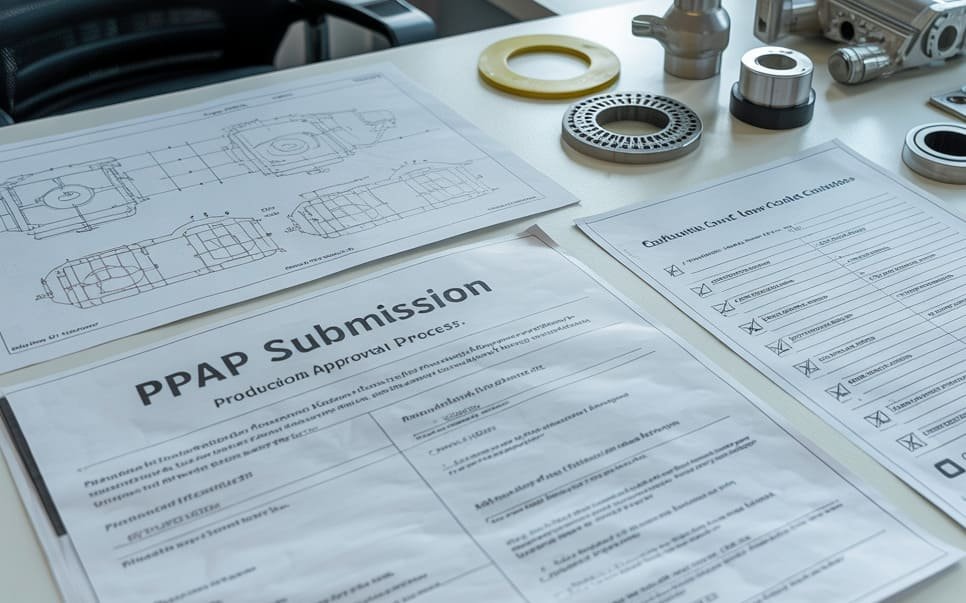
PPAP stands for Production Part Approval Process, a standardized quality management methodology that originated in the automotive industry. It provides a structured framework for suppliers and manufacturers to verify that production processes can consistently create parts meeting customer specifications.
The PPAP process requires suppliers to submit specific documentation and sample parts to demonstrate their manufacturing processes are capable of producing components that meet all engineering requirements. This documentation becomes the baseline for future production runs, ensuring consistency across all manufactured parts.
The Automotive Industry Action Group (AIAG) officially maintains the PPAP standards, which have become integral to the IATF 16949 quality management system for automotive manufacturing. However, the principles and benefits of PPAP have led to its adoption across numerous manufacturing sectors.
The Purpose and Importance of PPAP
The primary purpose of PPAP is to minimize the risk of production issues by verifying that suppliers thoroughly understand customer requirements and have developed manufacturing processes capable of consistently meeting those requirements during actual production runs.
Key Benefits of Implementing PPAP
For Manufacturers:
- Ensures consistent quality of incoming parts
- Reduces the risk of production delays
- Minimizes costly rework and scrap
- Creates clear communication channels with suppliers
- Establishes documented evidence of quality control
For Suppliers:
- Provides clear understanding of customer requirements
- Reduces the likelihood of rejected shipments
- Improves internal manufacturing processes
- Builds stronger relationships with customers
- Creates competitive advantage in the marketplace
By implementing PPAP, organizations establish a robust quality foundation that ensures parts are manufactured correctly from the start, reducing the need for corrective actions later in the production process. This proactive approach to quality management significantly reduces costs associated with defects, rework, and warranty claims.
Understanding the Five PPAP Submission Levels
PPAP submissions are categorized into five levels, each requiring different documentation based on the complexity of the part and customer requirements. Understanding these levels helps determine the appropriate submission package for your specific situation.
| Level | Submission Requirements | Typical Application |
|---|---|---|
| Level 1 | Part Submission Warrant (PSW) only | Standard parts with established history |
| Level 2 | PSW with product samples and limited supporting data | Minor changes to previously approved parts |
| Level 3 | PSW with product samples and complete supporting data | New parts or significant changes (most common level) |
| Level 4 | PSW and other requirements as defined by customer | Parts with special customer requirements |
| Level 5 | PSW with product samples and complete supporting data reviewed at supplier’s location | Critical components or new suppliers |
The 18 Core Elements of PPAP
A complete PPAP submission package consists of up to 18 elements, though not all elements are required for every submission. The specific requirements depend on the PPAP level and customer specifications.
Design & Engineering
- Design Records – Engineering drawings and specifications
- Engineering Change Documents – Approved changes not yet in design records
- Customer Engineering Approval – Evidence of customer design approval
- Design FMEA – Design Failure Mode and Effects Analysis
- Design Verification Plan & Report – Test results confirming design specifications
- Customer Specific Requirements – Additional requirements beyond standard PPAP
Process & Production
- Process Flow Diagram – Visual representation of the manufacturing process
- Process FMEA – Process Failure Mode and Effects Analysis
- Control Plan – Documented quality control system
- Measurement System Analysis – Gauge R&R studies
- Dimensional Results – Measurements of all dimensions
- Statistical Process Control – Evidence of process capability
Verification & Approval
- Qualified Laboratory Documentation – Lab certifications
- Appearance Approval Report – For parts with appearance requirements
- Sample Production Parts – Actual parts from production run
- Master Sample – Reference sample retained by supplier
- Checking Aids – Part-specific gauges and fixtures
- Part Submission Warrant – Summary document with approval signatures
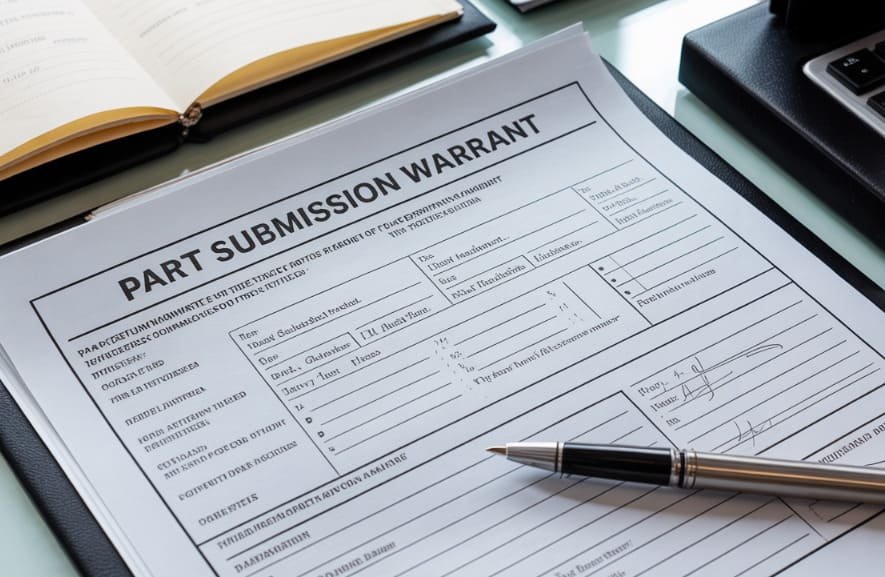
The Part Submission Warrant (PSW) serves as the summary document for the entire PPAP submission. It includes basic part information, the reason for submission, and supplier declaration that all requirements have been met. The PSW must be signed by an authorized supplier representative before submission to the customer.
PPAP Beyond Automotive: Industries Adopting the Process
While PPAP originated in the automotive industry, its effectiveness in ensuring quality and consistency has led to adoption across numerous manufacturing sectors.
Aerospace
The aerospace industry has adapted PPAP into the AS9145 standard, which integrates with AS9100 quality management systems. It focuses on 11 key elements tailored to aerospace manufacturing requirements.
Medical Devices
Medical device manufacturers use PPAP principles to ensure consistent quality and regulatory compliance. The process helps meet FDA requirements for production and process controls.
Electronics
The electronics industry implements PPAP to manage complex supply chains and ensure component reliability. It’s particularly valuable for critical electronic components in automotive and aerospace applications.
Heavy Equipment
Manufacturers of construction, agricultural, and mining equipment utilize PPAP to ensure consistent quality across their extensive supplier networks and complex component systems.
Each industry typically adapts the PPAP process to its specific needs while maintaining the core principles. For example, aerospace PPAP (AS9145) includes First Article Inspection (FAI) requirements, while medical device manufacturers integrate PPAP with Design Control requirements from FDA regulations.
Implementing PPAP: Best Practices and Common Challenges
Best Practices for Successful PPAP Implementation
- Early Engagement – Begin PPAP planning during product development phases
- Clear Communication – Establish open dialogue between customer and supplier
- Thorough Documentation – Maintain detailed records throughout the process
- Cross-Functional Teams – Involve engineering, quality, and production personnel
- Standardized Templates – Use consistent formats for all PPAP elements
- Regular Reviews – Conduct periodic assessments of PPAP documentation
- Digital Management – Implement software to track PPAP submissions
- Continuous Improvement – Apply lessons learned to future submissions
Common PPAP Implementation Challenges
Common Challenges:
- Incomplete understanding of customer requirements
- Insufficient resources allocated to PPAP preparation
- Poor communication between supplier and customer
- Inadequate measurement systems and equipment
- Difficulty managing documentation across multiple submissions
Solutions:
- Conduct thorough review of customer specifications before beginning
- Dedicate trained personnel to manage PPAP submissions
- Establish regular communication channels with customers
- Invest in proper measurement equipment and conduct MSA studies
- Implement digital PPAP management systems
The most successful PPAP implementations occur when suppliers view the process not as a bureaucratic requirement but as a valuable quality planning tool that benefits their own operations.
Real-World PPAP Implementation: Case Study
A tier-one automotive supplier was experiencing quality issues with a critical safety component, resulting in high rejection rates and customer complaints. By implementing a comprehensive PPAP process, they achieved:
- 90% reduction in customer rejections within six months
- Improved process capability (Cpk) from 1.1 to 1.8
- Decreased internal scrap rate by 65%
- Enhanced supplier-customer communication
- Standardized quality documentation across all product lines
The key to their success was treating PPAP as an integrated quality planning tool rather than a standalone documentation exercise. They involved cross-functional teams from the earliest design stages and maintained continuous communication with their customer throughout the process.
Conclusion: The Value of PPAP in Modern Manufacturing
The Production Part Approval Process (PPAP) has evolved from an automotive industry standard to a widely adopted quality management methodology across manufacturing sectors. By providing a structured framework for verifying production processes, PPAP helps ensure consistent quality, reduce defects, and strengthen supplier-customer relationships.
While implementing PPAP requires significant investment in time and resources, the returns in terms of reduced quality issues, minimized rework, and enhanced customer satisfaction make it an essential component of modern manufacturing quality systems.
